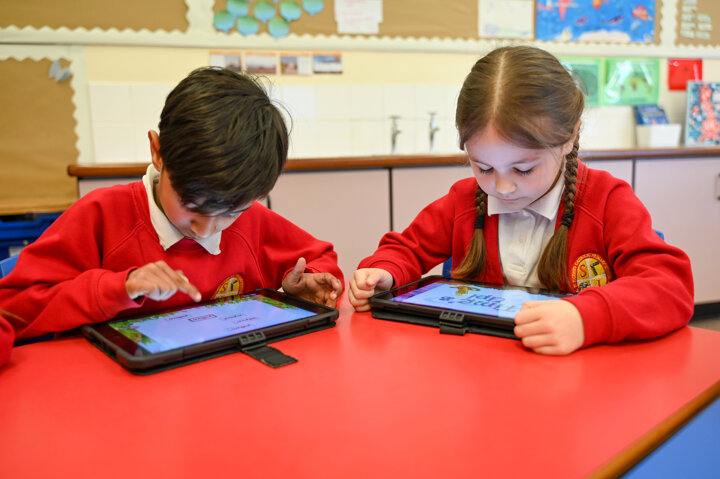Computing
Subject Lead: Miss Schiller
A warm welcome to our Computing page. At St Joseph's, our curriculum has been designed to excite and inspire all of our children, ensuring it is purposeful, progressive and meaningful for every child.
Intent
In Computing we intend to teach the principles of information and computation, how digital systems work, and how to put this knowledge to use through programming. We will build on this knowledge and understanding so that pupils use information technology to create programs, systems and a range of content. We will focus on being safe whilst working in a digital environment and understand the digital footprint we leave. The curriculum will develop pupil’s digital literacy so that they are able to use and express themselves at a level suitable for the future workplace and as active participants in a digital world.
Implementation
At St. Joseph’s Primary School, we teach the National Curriculum for Computing. Our curriculum is based on the National Centre for Computing Education (NCCE) computing taxonomy, which comprises ten key strands of knowledge and skills for Key Stages 1-4, listed below (the strands relevant to KS1 and KS2 are in bold).
Each strand summarises the top-level learning outcomes for every unit associated with that strand. For example, the NCCE strand of ‘Creating media’ explains that pupils should be able to ‘Select and create a range of media including text, images, sounds, and video’. All units and lessons within this strand are designed to help children achieve this outcome.
The units for KS1 and KS2 are based on a spiral curriculum, which means the strands are revisited regularly (at least once in each year group), and pupils revisit each strand through a new unit that consolidates and builds on prior learning within that strand
The Ten NCCE Computing Strands, and Associated Learning Outcomes:
1. Algorithms — Be able to comprehend, design, create, and evaluate algorithms;
2. Computer networks — Understand how networks can be used to retrieve and share information, and how they come with associated risks;
3. Computer systems— Understand what a computer is, and how its constituent parts function together as a whole;
4. Creating media — Select and create a range of media including text, images, sounds, and video;
5. Data and information — Understand how data is stored, organised, and used to represent real-world artefacts and scenarios;
6. Design and development — Understand the activities involved in planning, creating, and evaluating computing artefacts;
7. Effective use of tools — Use software tools to support computing work;
8. Impact of technology — Understand how individuals, systems, and society as a whole interact with computer systems;
9. Programming — Create software to allow computers to solve problems;
10. Safety and security — Understand risks when using technology, and how to protect individuals and systems.
In Upper KS2, physical computing (using micro-computers such as the Crumble and the micro:bit) is incorporated into the curriculum as it plays an important role in modern pedagogical approaches in computing, both as a tool to engage pupils and as a strategy to develop pupils' understanding in more creative ways. Additionally, physical computing supports and engages pupils in tangible and challenging tasks.
Impact
We encourage our children to enjoy and value the curriculum we deliver. We will constantly ask the WHY behind their learning and not just the HOW. We want learners to discuss, reflect and appreciate the impact computing has on their learning, development and well being. Finding the right balance with technology is key to an effective education and a healthy life-style. We feel the way we implement computing helps children realise the need for the right balance and one they can continue to build on in their next stage of education and beyond. We encourage regular discussions between staff and pupils to best embed and understand this. The way pupils showcase, share, celebrate, and publish their work will best show the impact of our curriculum. We also look for evidence through reviewing pupil’s knowledge and skills digitally through online tools and observing learning regularly. Progress of our computing curriculum is demonstrated through outcomes and the record of coverage in the process of achieving these outcomes.
"Digital technology is driving extraordinary global change, so it's crucial that children and young people are educated to make use of their opportunities."
-Amanda Spielman
